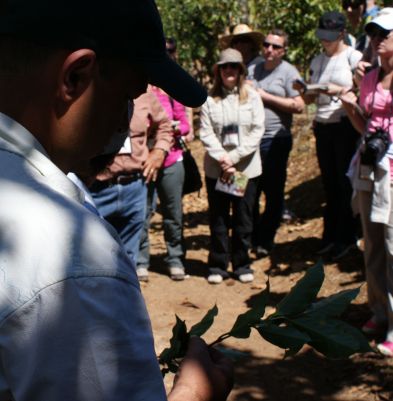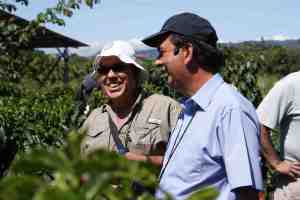This month I asked an esteemed friend and colleague, Heather Russell, to make a guest appearance on my blog. While she doesn’t profess to be a writer by trade, she is a self-proclaimed rock star (@rockstar_fac) and one of the smartest cookies I’ve had the privilege of working with. Her sweet spots include telling it like it is, sparking new ideas, and pioneering genius approaches to solving problems. I think you’ll find all three of these things reflected in her thoughts on the responsibilities and challenges that come with learning to trust yourself, as a leader and a human.
***
In all aspects of our life, we as humans deal with getting input. Sometimes we seek it, sometimes it is unsolicited, but input is rarely in short supply.
In my experience, asking people for their input gets you two things:
- A whole lot of opinions (that often go sideways on you and have nothing at ALL to do with what you asked for feedback on in the first place) and
- An expectation that you will take each and every person’s input as the gospel truth. Ok, so maybe not that extreme. But close.
Input is a wonderful and glorious thing; it gives you perspective you might not have had prior to asking and allows you to see all angles of the situation.
But (and this is a big one here), too much input or input that’s too loud or coming from someone who has authority over you can erode YOUR voice. Your opinion. Your instincts.
Ok, so maybe your boss won’t whack you over the head but they certainly can influence your performance rating, yes? This is the kind of authority I’m talking about.
I’ve seen it often in my career and personal life. Especially when someone is trying to grow their career and is working on a highly visible project or temporary job.
Has this happened to you? Have you ever wanted to be successful so badly that you think you have to take all of the opinions of anyone who has ever lived? Ever?
What winds up happening is possibly the worst outcome of all. You lose trust in the one person you should trust more than anyone else on the planet:
Yourself.
I just saw this happen. A wonderfully smart person in a temporary job was trying to prove that she’d had an impact, and was faced with a championship game moment…the last meeting. The last big opportunity to show what she had learned in this temporary job.
I watched her ask person after person what she should do.
I heard her say things like “maybe I should just do what x said” or “y keeps saying that I should do this, I think I should listen to y.”
She was circling the decision-making drain and couldn’t see how to get out of it.
As an outside observer, I could see clearly that she just needed to trust herself.
She had answers and input and observations that NO ONE else had. She had the exact insights the leaders she would be meeting with wanted to hear.
But in her panic, in her well-intentioned decision to solicit input, she lost sight of that.
She forgot to trust herself and follow the guidance of her inner voice.
But she’s not alone. We all do this.
We get so wrapped up in the input, feedback, and perspective that we spend countless hours trying to make all the Jenga ™ pieces fit and make everyone happy.
But guess what?
If you always make everyone happy you aren’t being innovative. You aren’t being creative.
You’re simply taking the dregs of someone else’s ideas (that incidentally they never acted on, ever wonder why that is?) and trying to marry them to another person’s recycled ideas. Dregs and recycling. Is that what you want?
Probably not. So why do we do this?
Because trusting yourself enough to hear what’s being shared, to examine it for what it is (one person’s perspective), and to consider if it has a place in your work is harder than it sounds.
When you care a lot, when you are working with people in positions senior to yours, when you are going through a change yourself, it is challenging to have this kind of perspective.
And yet, when you trust our own ideas and lean forward on them, shouting out to the world, “HERE IS MY IDEA AND ITS AWESOME!” that is when you have the chance to succeed in ways you’ve never seen before.
Or fail. (Yes, that’s always a looming possibility, isn’t it? But it’ll still be YOUR failure and isn’t it pretty?!)
The point is to go be a unicorn, and follow your own sparkle-covered ideas straight into awesomeness.
Maybe we can’t all be unicorns all the time. Maybe we can’t all be awesome all the time. And maybe we can’t all be awesome.
But we can believe in ourselves.
We can investigate the input we receive, examine it objectively and determine IF it has a place for our work.
When it does, we can take it and run with it. When it doesn’t, we can practice the art of politely thanking the person who provided it, and letting it go.
But only if we stay true to our sparkle-tastic unicorn selves.
Staying true requires vigilance. It requires awareness.
How do you know if you’re staying true?
1. Recognize the symptoms of eroded self-reliance. You’ll know you’re in it when you feel like you can’t decide. You can’t make a move. You have the hardest time making the easiest decisions (like what to wear to a meeting or what to eat for dinner.)
You are in a really bad place and need to ask for help when you find yourself driving around in circles, hungry and confused about what to pick up for dinner.
Call a friend, they’ll tell you you’re ridiculous (if they are a good friend) and tell you to stop at the first place you see. Ever had gas station burritos for dinner? Mmmm…. (I’m not at all speaking from experience here. Shush.)
2. Define and stick to your personal values. It’s hard to trust yourself without a touchstone, a “true north” that resonates for you.
Identify your personal values. Keep em close. Use them to make decisions. Reflect at least annually if they have changed. If you live by your values, you will always trust yourself.
3. Keep yourself in check. When it comes to effective leadership, self-reliance and self-trust are a fine line, my friends. Too much trust in your own instincts can make you seem arrogant. Can make you arrogant. So trust. Trust a lot. But keep yourself in check.
These three things have worked for me. But don’t take my advice – there are a million books out there on building trust and building relationships with those people you lead.
Go out and find what works for you – what keeps you connected to your ability to trust yourself, and enables you to be the best leader you can be.
Then tell me all about it at www.twitter.com/rockstar_fac.




